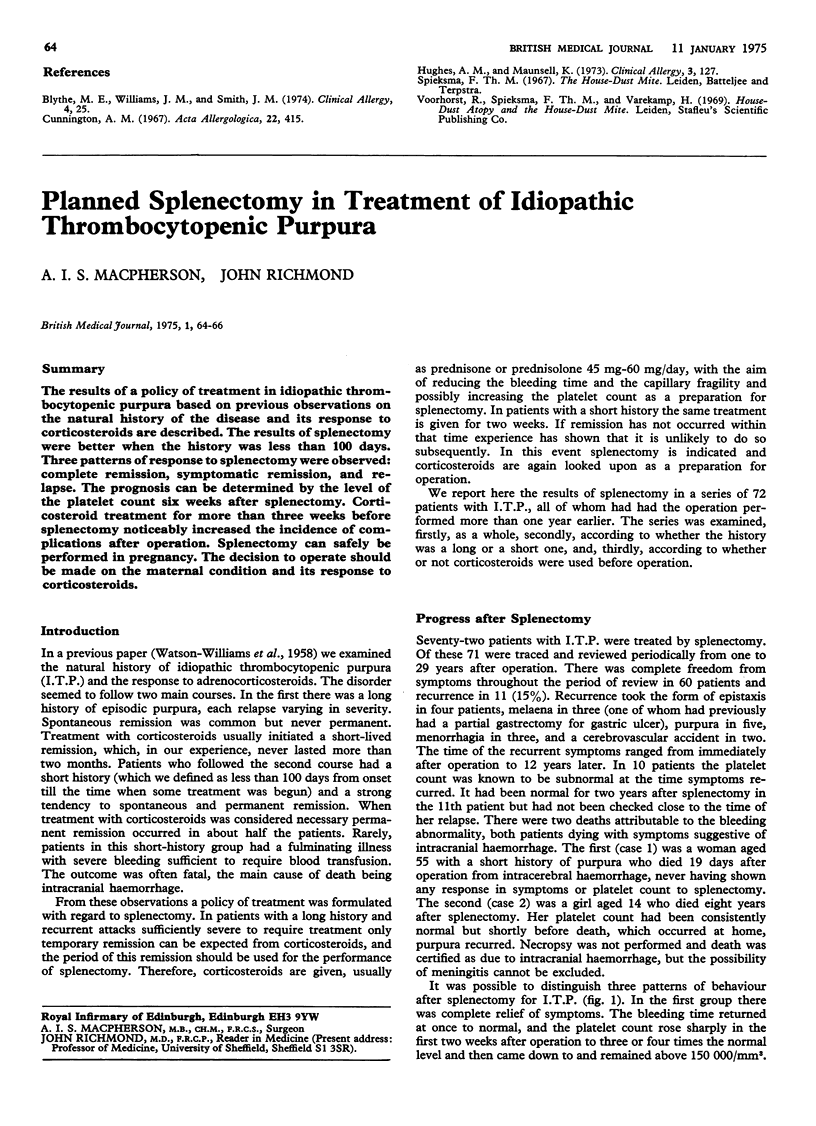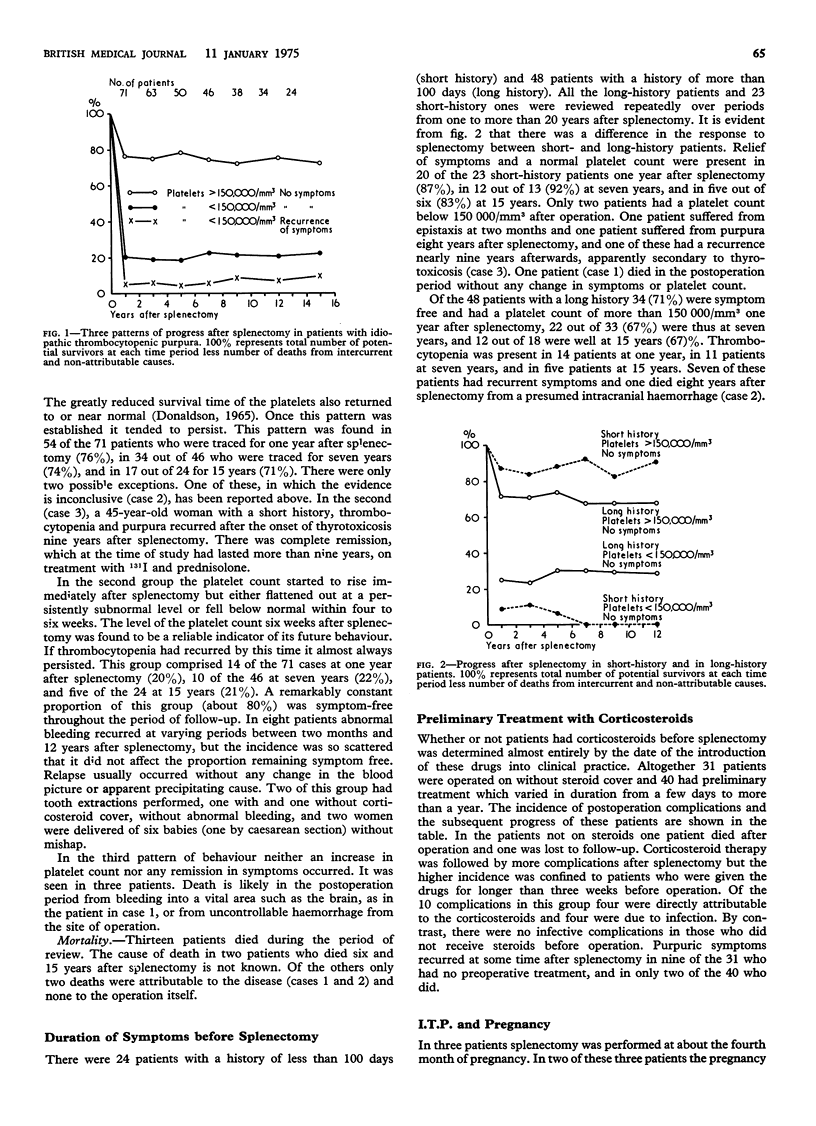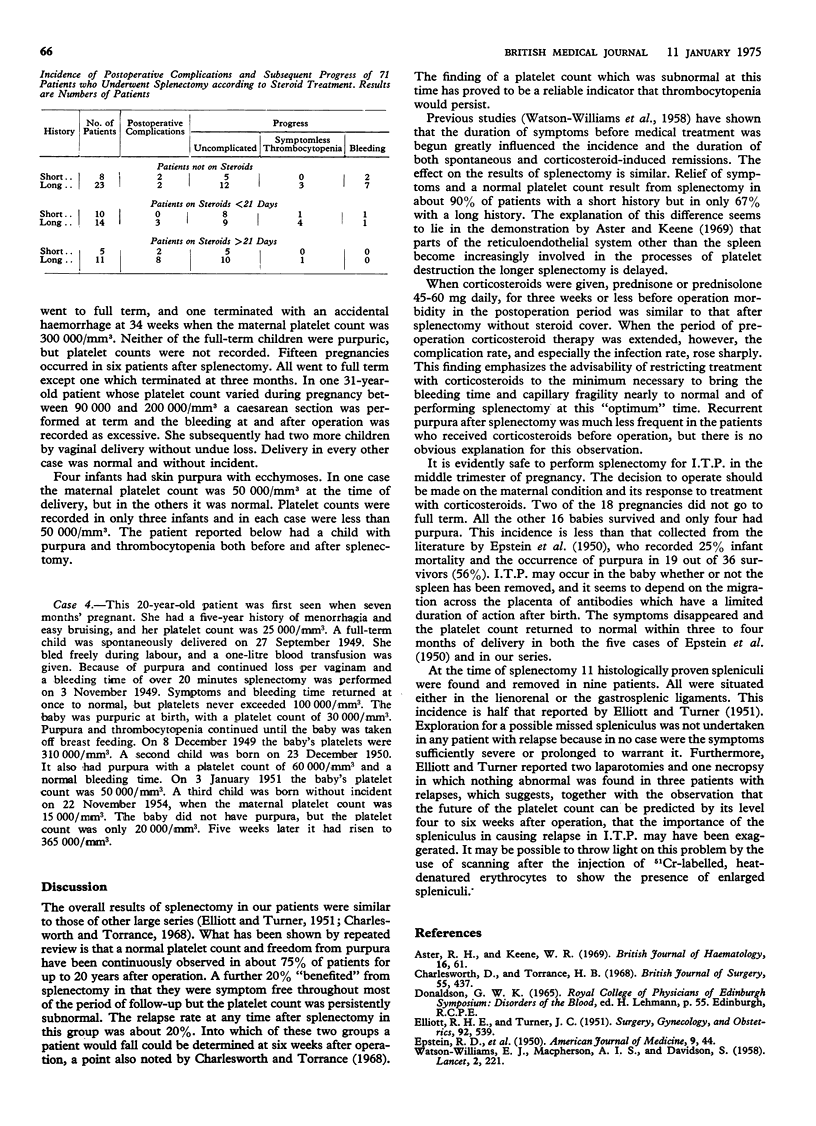Abstract
The results of a policy of treatment in idiopathic thrombocytopenic purpura based on previous observations on the natural history of the disease and its response to corticosteroids are described. The results of splenectomy were better when the history was less than 100 days. Three patterns of response to splenectomy were observed: complete remission, symptomatic remission, and relapse. The prognosis can be determined by the level of the platelet count six weeks after splenectomy. Corticosteroid treatment for more than three weeks before splenectomy noticeably increased the incidence of complications after operation. Splenectomy can safely be performed in pregnancy. The decision to operate should be made on the maternal condition and its response to corticosteroids.
Full text
PDF


Selected References
These references are in PubMed. This may not be the complete list of references from this article.
- Charlesworth D., Torrance H. B. Splenectomy in idiopath0cthrombocytopenic purpura. Br J Surg. 1968 Jun;55(6):437–439. doi: 10.1002/bjs.1800550608. [DOI] [PubMed] [Google Scholar]
- ELLIOTT R. H. E., Jr, TURNER J. C. Splenectomy for purpura hemorrhagica. Surg Gynecol Obstet. 1951 May;92(5):539–544. [PubMed] [Google Scholar]
- EPSTEIN R. D., LOZNER E. L., COBBEY T. S., Jr, DAVIDSON C. S. Congenial thrombocytopenic purpura; purpura hemorrhagica in pregnancy and in the newborn. Am J Med. 1950 Jul;9(1):44–56. doi: 10.1016/0002-9343(50)90007-6. [DOI] [PubMed] [Google Scholar]
- WATSON-WILLIAMS E. J., MACPHERSON A. I., DAVIDSON S. The treatment of idiopathic thrombocytopenic purpura; a review of ninety-three cases. Lancet. 1958 Aug 2;2(7040):221–226. doi: 10.1016/s0140-6736(58)90057-6. [DOI] [PubMed] [Google Scholar]


